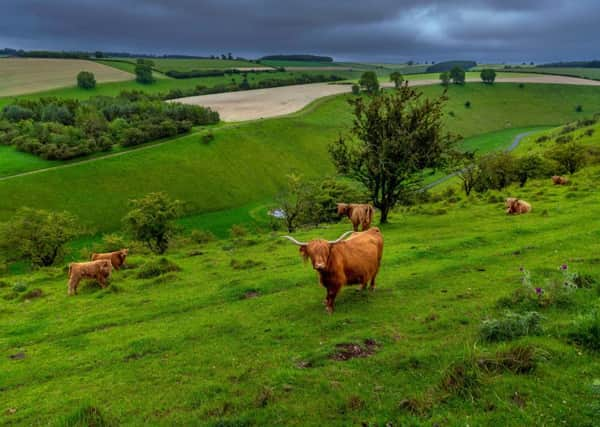Highland cattle and the green glory of the Yorkshire Wolds


Having spread from the west of Scotland, these majestic animals - first mentioned in the 6th century - can now be found from the furthest south to the extreme north on many different types of ground, varying from the slopes of the Sussex Downs and the fenlands of East Anglia, to the windswept machars of the Outer Hebrides.
Those of you who made it to last week’s Great Yorkshire Show might well have seen these great beasts at close quarters.
Advertisement
Hide AdAdvertisement
Hide AdHere, they are pictured in this brilliantly framed shot, grazing beneath brooding, leaden skies on top of the Wolds, near Thixendale, in East Yorkshire, on ground carved out by meltwaters some 12,000 years ago.
Thixendale is in the Ryedale district of North Yorkshire, though historically it was part of the East Riding about 20 miles east of York.
It has an interesting history. The place-name ‘Thixendale’ is first mentioned in the Domesday Book of 1086, where it appears as Sixtendale and Xistendale. The name means ‘Sigstein’s dale or valley’.
The Yorkshire Wolds, of course, need no introduction, even if its fame doesn’t quite match that of the glorious Dales. The Wolds is a relatively small crescent of rolling chalky countryside, arcing from Filey with its miles of golden beaches in the north to bustling Hessle, home of the iconic Humber Bridge, in the south.
Advertisement
Hide AdAdvertisement
Hide AdIt also boasts the Yorkshire Wolds Way - a 79 mile National Trail that extends through the East Riding of Yorkshire into Ryedale - characterised by dry valleys and stunning wildlife alongside vibrant market towns and ancient villages.
If you’re lucky enough to visit on a sunny day then you’ll see how the wide open spaces help amplify the bluest of endless skies. Though even on a murky-looking day like this, it’s a little corner of Yorkshire that is still well worth a visit.
Picture by James Hardisty
Camera Details: Camera, Nikon D5 Lens, Nikon 24-70mmShutter Speed, 1/400sec Aperture, f/5.0ISO, 250